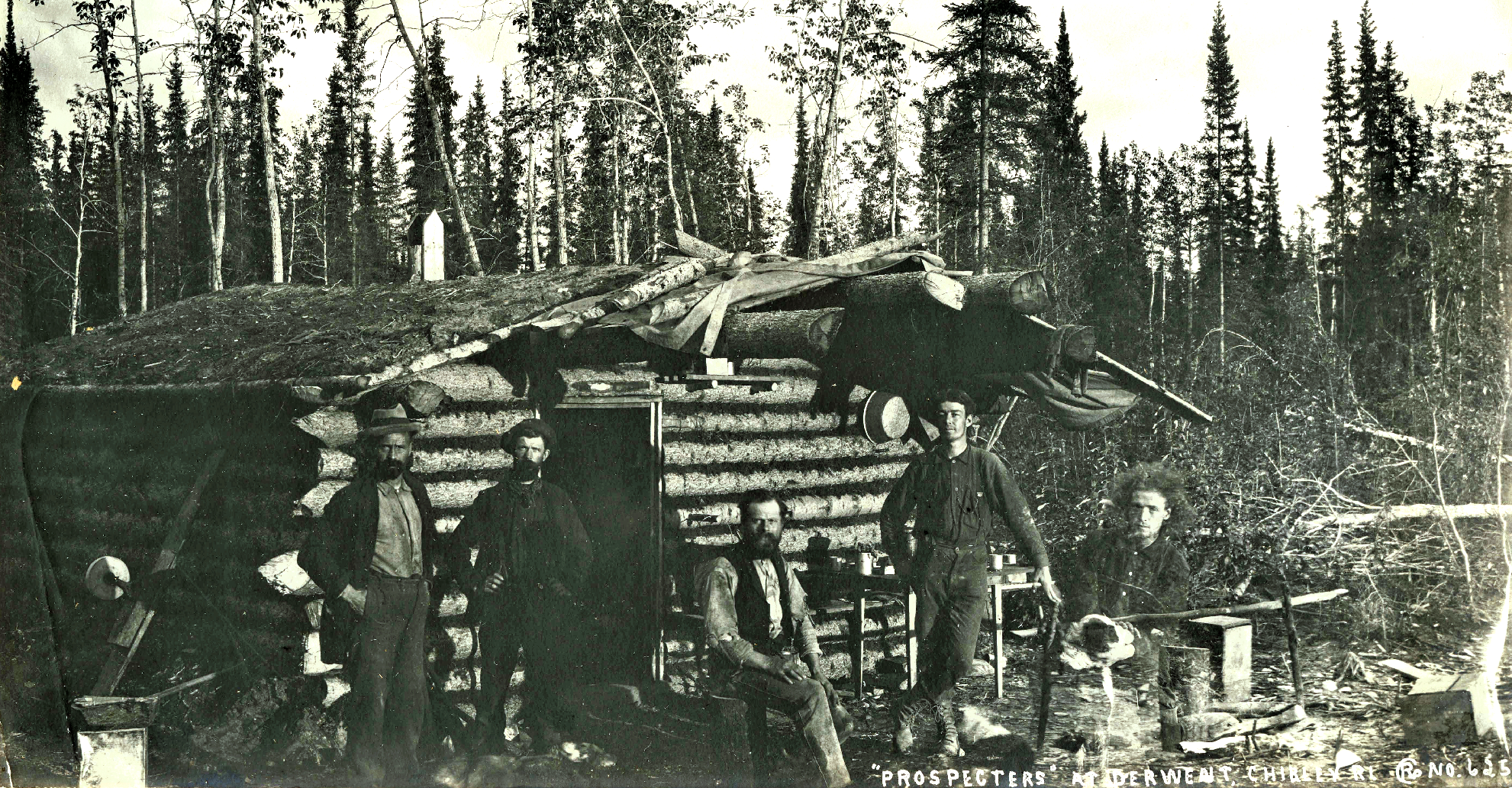|
The Klondike gold rush of 1897-1899 drew thousands of eager stampeders to gold fields in northwestern Canada, but only a few found what they were seeking. Often the most promising mining claims had been taken and latecomers had to find other employment or work as laborers at other people’s mines. Also, the Canadian government taxed gold at ten percent and enforced strict mining regulations. Many Americans looking for new opportunities crossed the U.S.-Canada border to investigate Alaskan rivers and creeks. One of these was the Charley River, which got its name from the Han Athabascan leader Chief Charley whose people had a village not far from the river’s confluence with the Yukon. "It has been mostly the arrivals of ’98 who have ‘got in on’ the creeks below here, the creeks that are now beginning to be most talked about. Chief among these streams is Charlie River, which pours into the Yukon about eighty or ninety miles above Circle. Here some ninety to one hundred men are hopefully sinking holes, occasionally encouraged by the glitter of big nice fat ‘flax seed’ colors."—Seattle Post-Intelligencer, January 22, 1899
NPS/Josh Spice Prospectors on the moveOnce gold-seekers left Dawson City and the Klondike for the American side of the line, they began giving patriotic names to the waterways they prospected like Washington Creek and Fourth of July Creek. This was a celebration of being on home soil and, it was suggested, an attempt to irritate the Canadians. Two clusters of cabins took shape near the mouth of the Charley River—the first was called Derwent after its founder Jack Derwent, and the other was Independence. William T. James of Sterling, Illinois was one of the early stampeders to the Charley River and wrote this on October 18, 1898 (he spells the river’s name with an -ie as was the practice in the early days): "It was getting too cold to try to go to Charlie River by going down to the mouth and going up, so we thought we would go up Seventy Mile and cross the mountains. So we loaded the boat again and a fellow from Ventura, California came with us. We came up this far and left some flour and bacon here and then went up to where the river forks. We crossed four ranges of mountains before we got to the main river. We prospected in four different creeks but did not have enough grub to last us till we could sink a hole."
Seattle Post-Intelligencer, January 17, 1899 Searching for goldHauling supplies and digging prospecting holes along Charley River tributaries was back-breaking work, and only a few miners stayed beyond the first year. William James did, and he described in his journal the practice of “burning down” which involved setting fires to melt frozen ground before hoisting the material to the surface with a bucket and winch, or windlass: Jan. 31, 1899: Derwent stayed all night with us last night. I got some wood cut and a stick for the windlass drum.
|
Last updated: August 12, 2020


